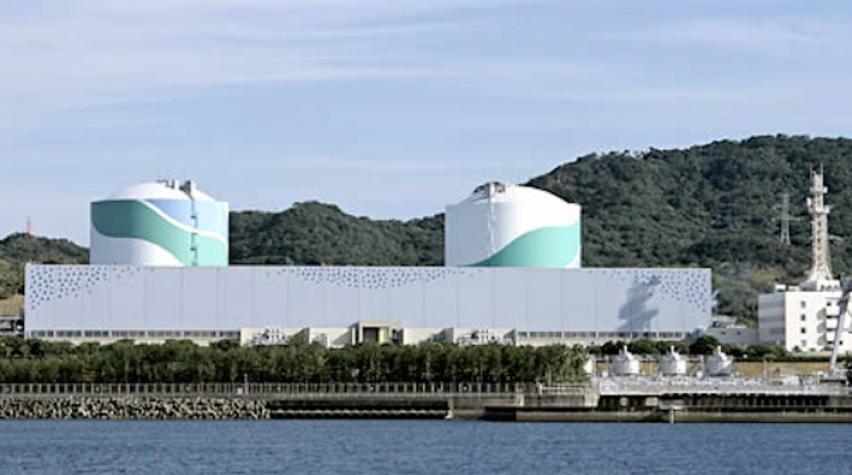
Four years after Japan locked down nuclear power in response to the 2011 earthquake and tsunami that wrecked the Fukushima Dai-Ichi nuclear power plant and forced 160,000 people to flee from their homes, Japan is heading into unknown territory, a science and social experiment on the fly, as it begins to restart its fleet of mothballed nuclear reactors.
First came the highly watched television press conference May 27. Speaking to a concerned nation, the country’s newish Nuclear Regulation Authority (NRA) cleared the way for the first nuclear plant to go back online after meeting rigorous new safety standards.
Two weeks later, Kyushu Electric Power's Sendai plant on the island of Kyushu came to life, which also happens to be the reactor furthest away from Tokyo, where protesters regularly gather outside Prime Minister Shinzo Abe's official residence.
Restarting the first of the Sendai's two 30-year-old reactors represents a victory for Abe, who was elected in 2012 claiming that without nuclear energy the slow Japanese economy would wobble along under the burden of expensive oil and gas (LNG) imports.
Flooded by imports
That's because Japan, as a literal energy island, has little fossil fuel of its own and must import everything it uses, which has caused power costs to rise 20 percent for households and 30 percent for businesses. Balance sheets suffered while Japan’s trade deficit ballooned.
After the Fukushima accident, nuclear's share of electricity generation declined. Japan's utilities initially substituted natural gas, heavy fuel oil, crude oil, and coal, but the oil-fired generation began declining in 2013, as Japan relied more on natural gas and coal.
Because of this resource shift, Japan spent 60% more for fossil fuel imports in 2013 compared to 2010, an increase of $270 billion over three years.
Meanwhile, almost 4 gigawatts (GW) of additional coal capacity came online in 2013, increasing the share of coal-fired generation.

Kyushu said that starting the number-one reactor at its Sendai nuclear station would help it reduce costs incurred from burning fossil fuels by about $60 million a month.
Kyushu also aims to have its 890-megawatt number-two reactor running by mid-October. It said earlier that with both reactors operating, it would save about 15 billion yen ($121 million) in fuel costs per month, mainly by using less oil and LNG.
The past/future doesn't look pretty
Many experts expected to see problems trip up the restart in Japan. Although more than $100M was been spent retro-fitting new safety features at the Sendai plant, previously restarted reactors showed that the process rarely goes smoothly. Of the 14 reactors that resumed operations after being offline for at least four years — exactly like Kyushu's — all had emergency shutdowns and technical failures, according to the International Atomic Energy Agency.
“If reactors have been offline for a long time, there can be issues with long-dormant equipment and with ‘rusty’ operators,” Allison Macfarlane, a former chairman of the U.S. Nuclear Regulatory Commission, presciently told Bloomberg by e-mail.
As a typical example, after Sweden's E.ON Sverige AB restarted the number-one unit at its Oskarshamn plant in 1996, four years after it was idled, there were six emergency shutdowns the following year. What should have been a routine 38 day refueling process dragged on for more than four months after cracks were found in equipment.
Early problems
At Sendai the 890-megawatt reactor took about 12 hours to go critical after the startup.
The reactor was supposed to reach full power about 10 days from restart, but just as the experts predicted, Kyushu said last Friday it will delay planned increases in electrical output from the reactor since seawater is believed to have entered into a reactor's cooling system.
The startup will be delayed a week to fix the problem, reported The Japan Times, which also explained:
A small amount of seawater is believed to have flowed into one of the three condensers in the reactor’s secondary cooling system, the officials said. Condensers turn steam into water by cooling it, after the steam runs power generation turbines.
The reactor will continue operating while the salt is removed with desalination equipment. Company officials explained how the problem was discovered:
The level of electric conductivity, which is monitored to check water conditions, rose Thursday afternoon at an outlet of a condensate pump used to circulate secondary coolant water.
This is a perfect example of the type of problem that crops up after restarting a long-idled plant. In this case complexity is everyone's enemy.
Each condenser has some 26,000 tubes inside that are used to pipe seawater around for cooling. Kyushu Electric suspects that holes have opened on the tubes, (that didn't happen overnight) causing seawater to enter into the condenser. The company will seal any tubes found to have holes.
In Japan, similar problems have occurred about 50 times in the past, but the latest case was the first at the Sendai power plant.
Will the future be bumpy?
Images: Sendai, IAEA; Fukushima, Digital Globe; chart, EIA


